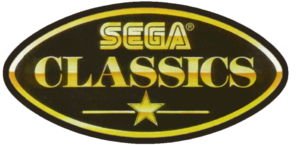Difference between revisions of "OziSoft"
From Sega Retro
| Line 1: | Line 1: | ||
{{Company | {{Company | ||
| − | | logo= | + | | logo=[Ozisoftlogo.png] |
| width= | | width= | ||
| founded=1982 | | founded=1982 | ||
Revision as of 23:36, 6 March 2016
This teeny-tiny article needs some work. You can help us by expanding it.
OziSoft is an Australian-based company which specialised in video games. In was formed in 1982 by Mark Dyne and Kevin Bermeister, and was responsble for the manufacturing and distribution of Sega products in Australia and New Zealand.
In 1991 the company was sold to First Pacific Hong Kong, and in 1992, presumably impressed with their distribution efforts, the company was bought out by Sega, becoming Sega OziSoft. Dyne and Bermeister continued to have managerial control over the company and went on to start other firms, such as Packard Bell and even Sega Enterprises Pty Ltd. (now Sega Australia(?)).
Sega relinquishing its controlling share in the company shortly before the launch of the Sega Dreamcast (March 1998), though OziSoft continued to market the console. The firm reverted back to the old name, OziSoft. In the December of 1998, Infogrames bought a 62% share in the company turning it into Infogrames Australia Pty Ltd.. They later became sole owners, turning it into Atari Australia Pty Ltd. after the parent company's successful purchase of Atari Corporation.
Since then Namco Bandai Holdings have bought the company.
Contents
"Sega Classics"
Exchange rates and production costs meant that the price of new Sega Mega Drive games in 1994 had begun to reach the level at which the console was sold back in 1990. The situation was untennable, so Sega OziSoft targeted the rental market. Games could be rented first, and somewhere down the line these games would later be sold in stores under the "Sega Classics" line when manufacturing costs had been reduced (however, third party publishers in the region such as Electronic Arts and Sony Electronic Publishing opted against this method). Ecco the Dolphin was the first game to receive this treatment.
"Silver" Releases
Towards the end of the Sega Master System and Sega Mega Drive's lifespan, Sega OziSoft, responsible for manufacturing much of Australia's Sega stock, began to use silver plastic for boxes and game cartridges, as opposed to the standard black. The reasoning behind this is not fully understood - the same games were also sold in black plastic and the internal contents are identical, but the silver versions are often valued at a higher price for their unusual nature and rarity. Silver plastic is also sometimes seen paired with Sega Gold Collection and Sega Platinum Collection re-releases.
Master System
- Disney's Aladdin
- Ecco the Dolphin
- Mortal Kombat II
- Sonic Spinball
- Wonder Boy III: The Dragon's Trap
- World Cup USA '94
Mega Drive
- Astérix and the Power of the Gods
- Atomic Runner
- Bloodshot
- Boogerman: A Pick and Flick Adventure
- Bubba 'N' Stix
- Cannon Fodder
- Champions World Class Soccer
- Daffy Duck in Hollywood
- Desert Demolition Starring Road Runner and Wile E. Coyote
- Dune II: Battle for Arrakis
- The Jungle Book
- The Lion King
- Marko's Magic Football
- The Ottifants
- Quackshot Starring Donald Duck
- The Ren & Stimpy Show Presents Stimpy's Invention
- Shinobi III: Return of the Ninja Master
- Stargate
- Sub-Terrania
- True Lies
- Warlock
- X-Men 2: Clone Wars
VHS Case Releases
Later on in the life of the Sega Megadrive, some games came out in Australia in different boxes than normally. Specific games would get released in plastic VHS cases, in which made the artwork requires much larger.
- Light Crusader
- Marsupilami
- Sonic & Knuckles Platinum Version
- Vectorman
Double Pack Releases
Along with the Silver cartridge re-releases, Ozisoft also released several Master System and Megadrive games in "Double Pack" packaging, featuring two titles in a VHS styled plastic box, a cardboard inner section, and their manuals. As Sega Ozisoft published several titles outside of Sega games, these double packs sometimes contained games from a variety of publishers.
Master System
- Double Pack: Aladdin and GP Rider
- Double Pack: Ayrton Senna and Tazmania
- Double Pack: The Jungle Book and Jurassic Park
- Double Pack: Lemmings and Trivial Pursuit
- Double Pack: The Lion King and G-Loc
- Double Pack: Mortal Kombat and Wolfchild
- Double Pack: Road Rash and Asterix
- Double Pack: Sonic 2 and Ayrton Senna's Super Monaco GP II
- Double Pack: Spider Man II and Wanted
Mega Drive
- Double Pack: Aladdin and Ranger X
- Double Pack: Another World and Arcade's Revenge
- Double Pack: Bubsy and Jewel Master
- Double Pack: Combat Cars and World Cup Italia '90
- Double Pack: Davis Cup World Tour and Gunstar Heroes
- Double Pack: Ecco the Dolphin and Ariel the Little Mermaid
- Double Pack: Fantastic Dizzy and Rocket Knight Adventures
- Double Pack: Hulk and Spiderman
- Double Pack: Joe Montana Football 3 and Double Clutch MD
- Double Pack: Micro Machines and F1
- Double Pack: Mortal Kombat II and Revenge of Shinobi
- Double Pack: Sonic 2 and Global Gladiators
- Double Pack: Sonic 3 and Mega Games 1
- Double Pack: The Jungle Book and Columns
- Double Pack: X-Men and Space Harrier 2
- Double Pack: Quackshot and Battletoads
Sega Booster Pack Releases
A rather rare oddity later in the Mega Drive's life, the Mega Booster Pack is a paint tin which contains two Sega titles, a packet of Intergalactic Sonic Bomb lollies, and a random Booster Bonus, either a watch, baseball cap or other oddities. Very little is known about them or how limited in quantity they were.
